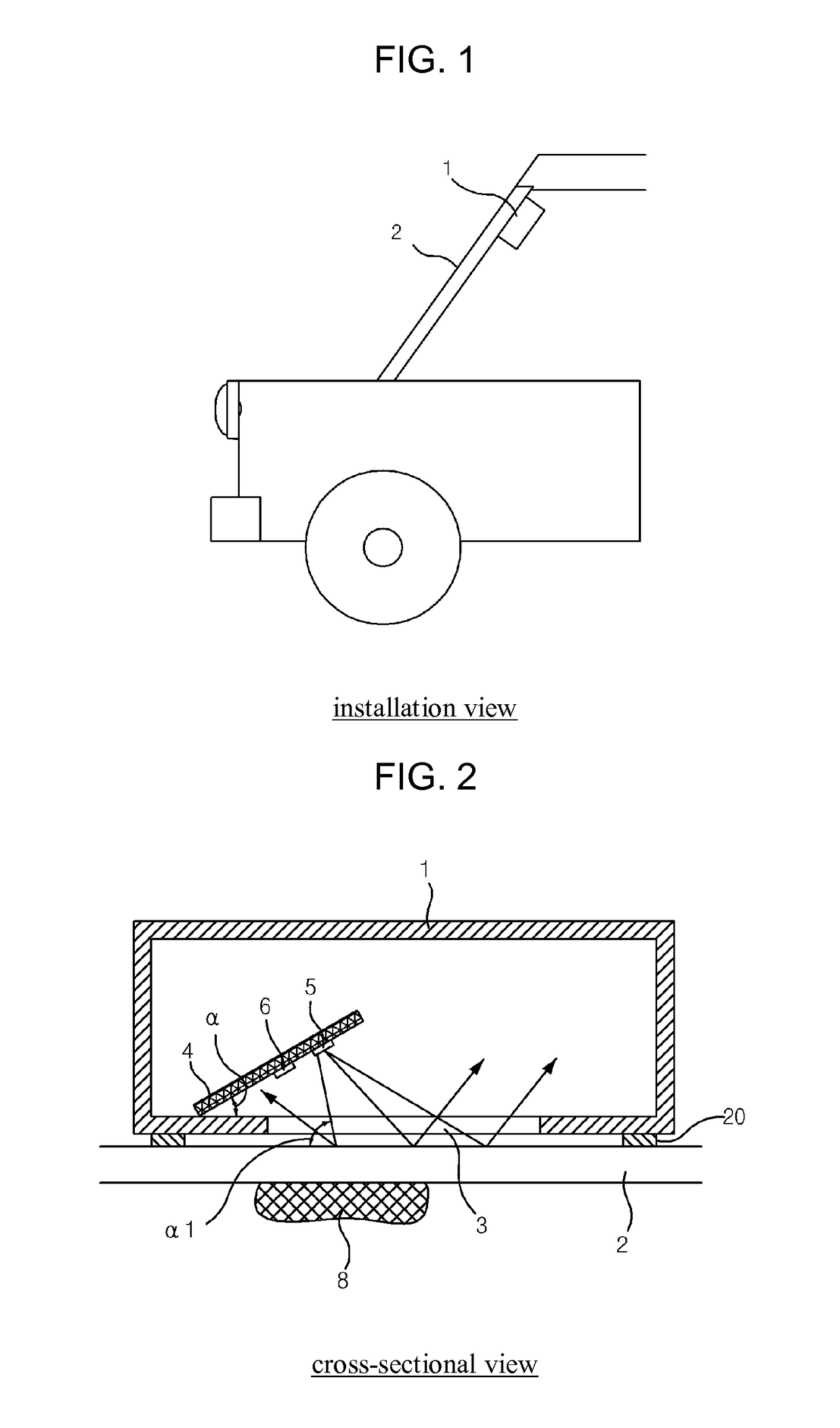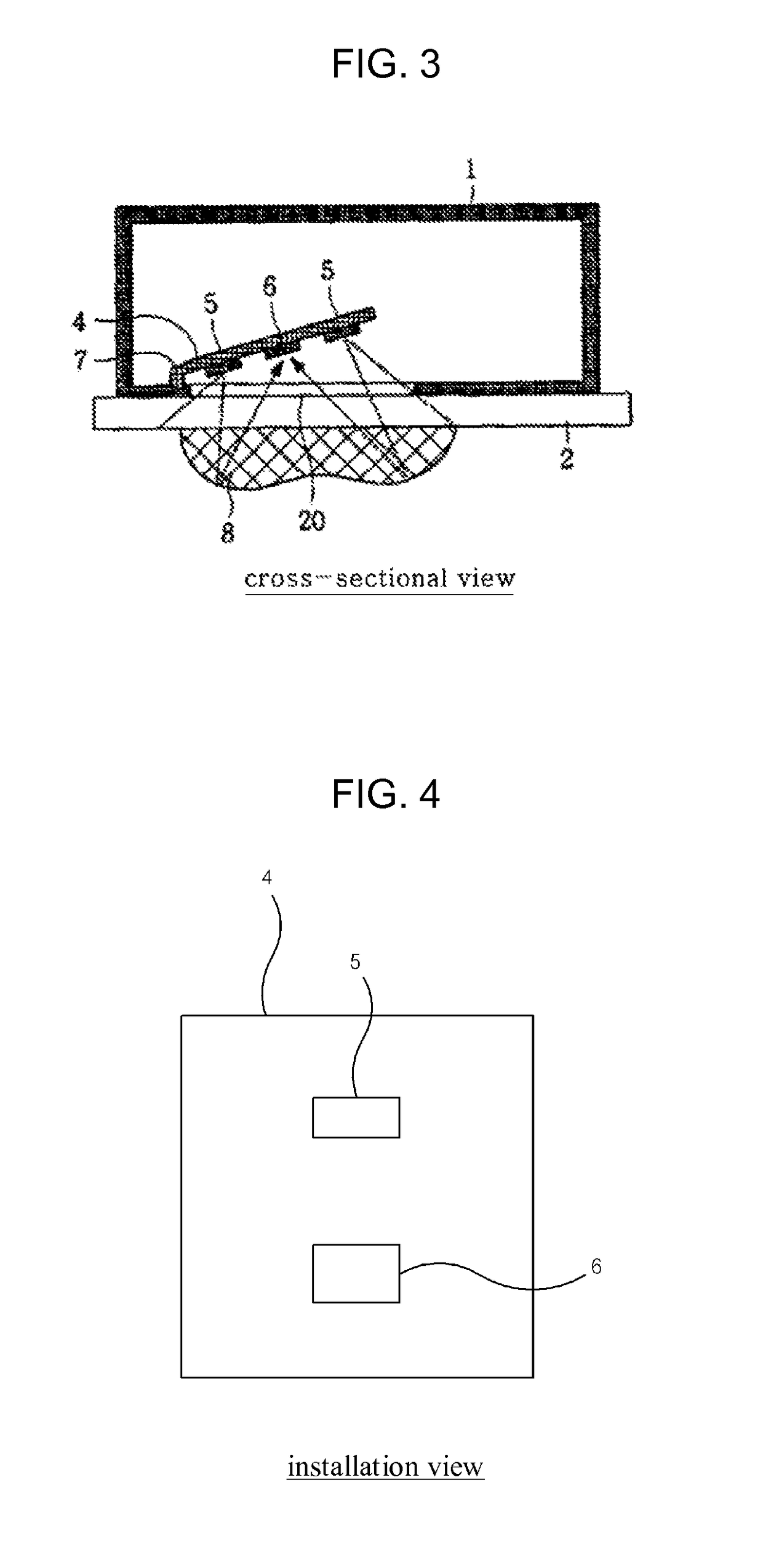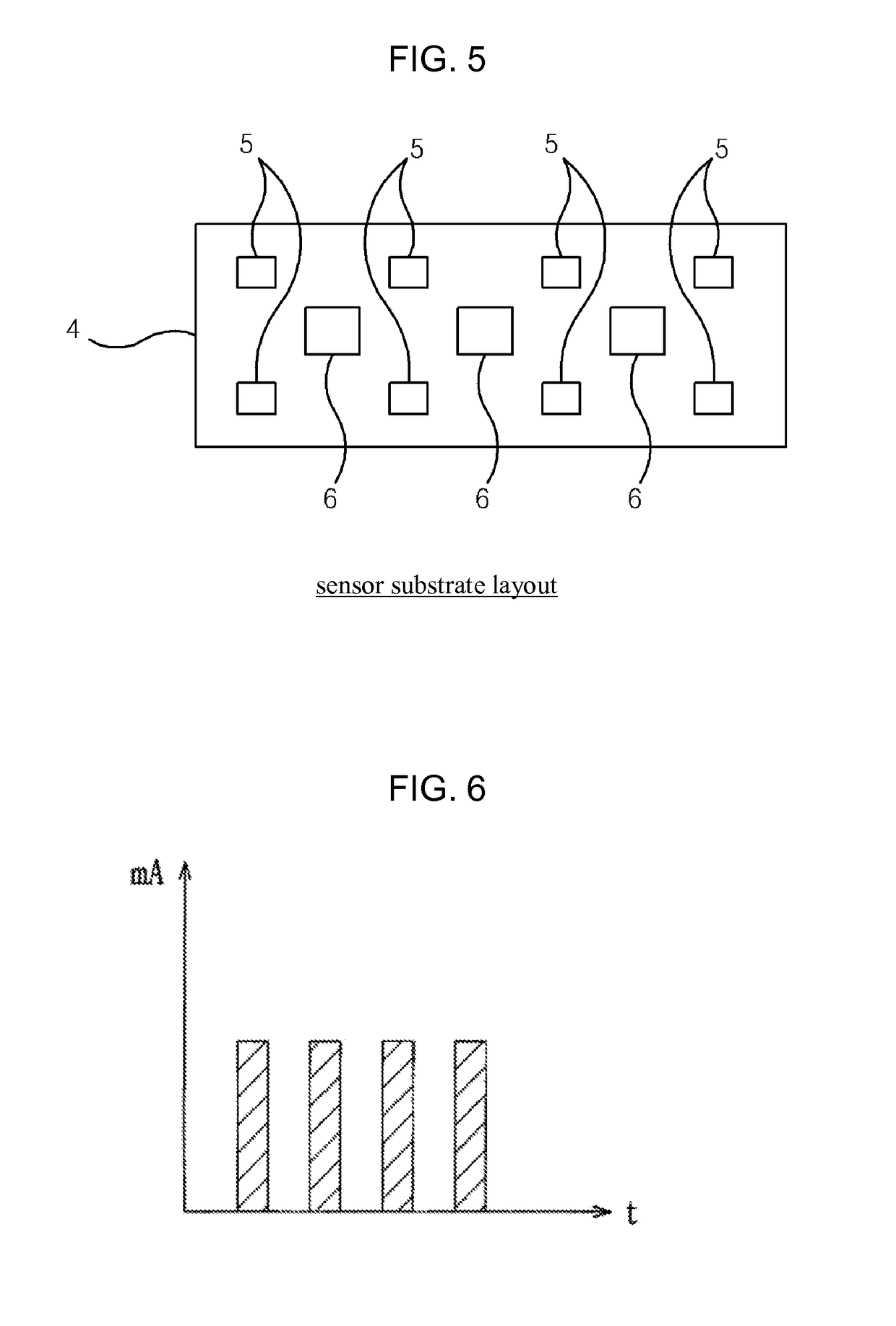Rain sensor
a sensor and rain sensor technology, applied in the field of rain sensors, can solve the problems of snr degradation, difficulty in mounting, and mounting difficulties, and achieve the effects of reducing the probability of rain sensor malfunction, enhancing operation reliability, and preventing snr degradation
- Summary
- Abstract
- Description
- Claims
- Application Information
AI Technical Summary
Benefits of technology
Problems solved by technology
Method used
Image
Examples
Embodiment Construction
[0035]A rain sensor comprising a light source (5) radiating signal light according to the generated signal in a transmitter (11), a light receiving element (6) for receiving light in the unit sensing area facing towards the light reflected from the raindrops by the radiating light of the light source (5) and arranged with surrounding four light sources (5), an infrared filter installed in the opening formed at the one side of the housing (1) of the rain sensor, and a receiver (9) excluding noise components caused by the reflection from the surface of the windshield (2) and extracting only the modulated frequency component of the signal light to determine the amount of existing raindrops on the surface of the windshield so as to minimize the effect of ambient light and enhance the raindrop sensing probability is provided.
[0036]According to the present invention, a rain sensor comprising a light source (5) radiating light into the windshield (2); a light receiving element (6) performi...
PUM
 Login to View More
Login to View More Abstract
Description
Claims
Application Information
 Login to View More
Login to View More - R&D
- Intellectual Property
- Life Sciences
- Materials
- Tech Scout
- Unparalleled Data Quality
- Higher Quality Content
- 60% Fewer Hallucinations
Browse by: Latest US Patents, China's latest patents, Technical Efficacy Thesaurus, Application Domain, Technology Topic, Popular Technical Reports.
© 2025 PatSnap. All rights reserved.Legal|Privacy policy|Modern Slavery Act Transparency Statement|Sitemap|About US| Contact US: help@patsnap.com



